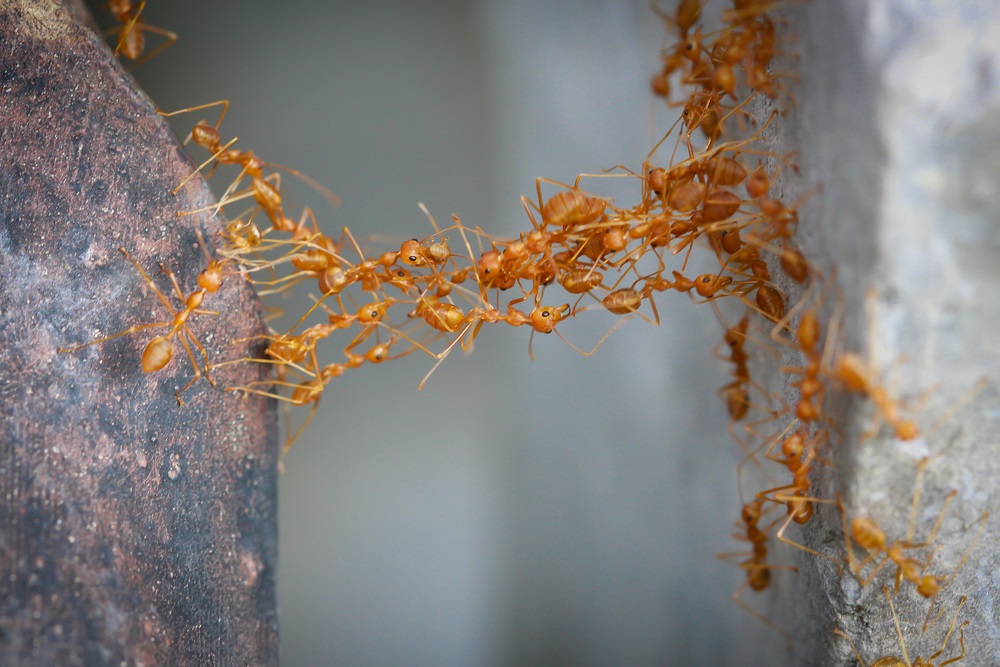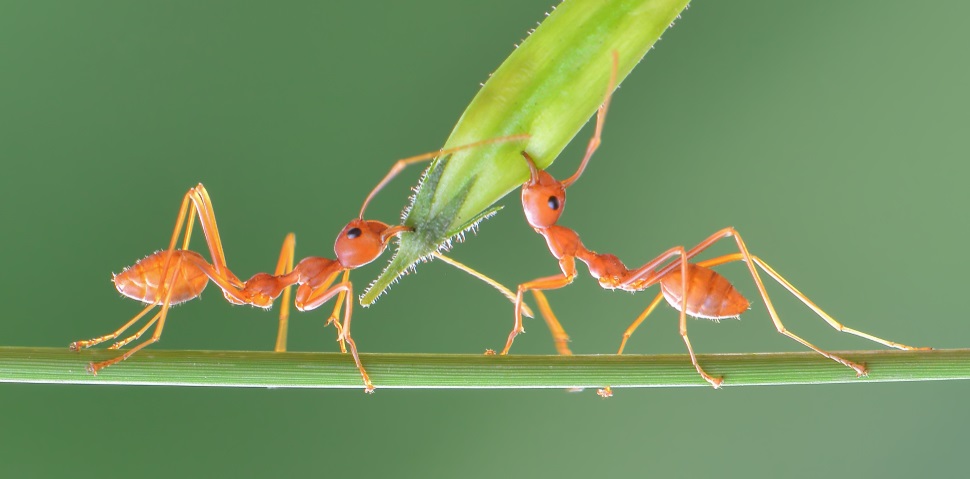The newest issue of MUSE Magazine is all about one of the most fascinating and important creatures on the planet– the humble ant! Ants are so common that you might think you know all there is to know about them. They love to ruin picnics, they walk in neat little lines, and they’re not the biggest fans of anteaters. But here are some lesser-known facts about these creepy-crawly critters that may change the way you see them!
Ant colonies are all female
Ant expert Edward O. Wilson (heavily featured in this month’s MUSE) says, “Male ants are allowed to stay around for a very brief period of time just to be mates, and then they get lost when they go out to mate, or they’re thrown out, or they die. Their lives are usually quite short.” Ants also have a nasty tendency to eat their dead and wounded. It isn’t much fun to be a male ant! By the way, in case anyone asks, the correct term for an ant expert is ‘myrmecologist.’ No, they don’t study mermaids.
Ants communicate by smell
Well, in a manner of speaking. Ants use pheromones (secreted chemicals) to understand each other. They use their antennae to smell as well as to touch and feel their surroundings. Using a variety of different glands, ants can put out alarm pheromones (warning smells), ‘love potions’ to attract a mate, trails leading to food nearby, indications that another ant is dead, and so much more. In fact, Edward O. Wilson made a disturbing discovery about that last one. Dead ants secrete oleic acid. But if you dab oleic acid on a living ant, its friends will interpret it as dead even if it’s still merrily roaming around the colony. They might even bury it alive!
Check out this video with Smithsonian research entomologist Ted Schultz to learn more:
Ants are super-strong
Okay, you might know this one if you’ve seen the movie Ant-Man, or if you’ve ever seen ants carrying around a chunk of food that’s bigger than them. But just how strong are they? Average ants are frequently observed carrying 10 to 100 times their own body weight, but that’s not all they’re capable of. Recent research shows that some ants can withstand up to 5,000 times their own body weight (though we imagine it’s less than comfortable for the ants). The secret is in their neck joints, which have a series of bumps and folds that allow them to bear heavy weights.
A colony of ants can be considered a “superorganism”

This is yet another Edward O. Wilson discovery. Ants may have individual bodies and individual roles in a colony, but an ant colony functions more like one big organism, and each ant functions more like a cell. Army ants, for example, build bridges with their bodies to get where they need to go. When you accidentally touch a hot stove, your nervous system sends signals to your hand to make you immediately yank it back. Ants respond the same way to a threat on their colonies, withdrawing in response to an attack on the outer edges or scattering out in response to an attack on the heart of the colony. The goal, if ants can set goals, is to keep as much of the colony safe as possible.
Ants can become ‘zombies’
We already talked about the old oleic acid trick that makes a living ant seem dead to other ants. Sadly, this isn’t the only way that ants can become zombified. A fungus called Ophiocordyceps insidiously takes over ants’ bodies like a zombie virus from a horror movie. Simply walking over a single spore of Ophiocordyceps is all it takes for the fungus to burrow deep into the ant’s body and start growing. Soon, over half of the cells in the ant’s head are actually Ophiocordyceps!
Incredibly, it’s still walking around and doing its job– but now the fungus is in control. And its only purpose is to infect other ants. One day, the zombified ant flees the nest, climbs a tree, clamps onto a leaf with its jaws, and dies. This was Ophiocordyceps’ plan all along. A stalk of the fungus sprouts from the ant’s body and rains new spores down on the forest floor, where other unlucky ants are doomed to pick them up and continue the cycle.
If you think this story is disturbing, imagine being an ant! It’s easy to imagine ant colonies telling this scary story around a little ant campfire!
Some ants might be older than your teachers

The queen ants of some species can live up to 30 years. That might be older than some of your teachers! This is over 100 times longer than most solitary insects live. In fact, some insects only live for days or weeks. Remember when we said that male ants don’t live very long? Queen ants can live up to 500 times longer than the average male. Imagine this: there could be ants living today that lived through the rise of the World Wide Web, five different US Presidents, and every Spider-man movie, from Tobey Maguire through Tom Holland.
Ants could be the key to preventing a mass extinction
There have been five mass extinctions on planet Earth so far. The most famous is the one at the end of the Cretaceous period, aka the end of the dinosaurs. Many scientists, however, believe that we’re in the midst of a man-made sixth mass extinction– and it’s up to us to stop it. When we think of endangered animals, pandas and tigers may come to mind, but insects make up about 80 percent of the world’s species and up to a third of them are in danger of extinction. Edward O. Wilson believes that up to half of the species on earth have not even been identified yet. For example, ants alone make up about 12,000 species, but there may be many more out there in quickly disappearing habitats like rainforests and deserts. Wilson believes it’s extremely important to protect these diverse ecosystems before it’s too late.
He also states that the destruction of a single crucial ‘keystone species’ can lead to the downfall of many others. He says, “Even though these species may be only a handful out of thousands in a particularly ecosystem, they are needed in good health to maintain the whole ecosystem.” Ants are known as ‘keystone species’ around the world because of their strong symbiotic relationships with other species, their large burrows that aerate the soil, and their sheer numbers. So, next time you see an ant at a picnic, maybe don’t squash it. It might be a member of a rare species!
Ants live on every continent on Earth except one
Can you guess which one? Believe it or not, it’s… Ant-arctica.
Did you learn anything new and interesting about ants in the latest issue of MUSE? Any future myrmecologists out there? Let us know!



